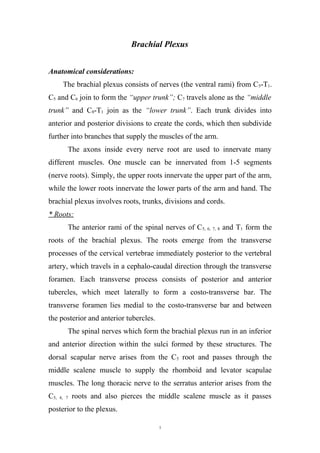The brachial plexus consists of nerves from C5-T1 that form roots, trunks, divisions and cords to innervate the muscles of the arm. Brachial plexus injuries are more common in overweight babies and complicated deliveries involving shoulder dystocia. Injury can range from upper root involvement causing inability to abduct the shoulder to complete plexus palsy resulting in a flail arm. The majority of cases involve the C5-C6 roots (Erb's palsy) but spontaneous recovery is possible depending on the severity of the nerve damage.












